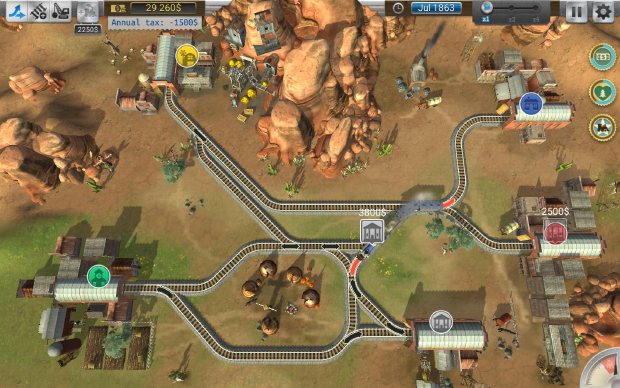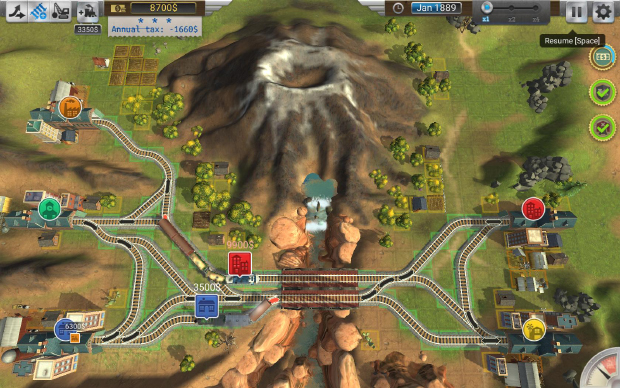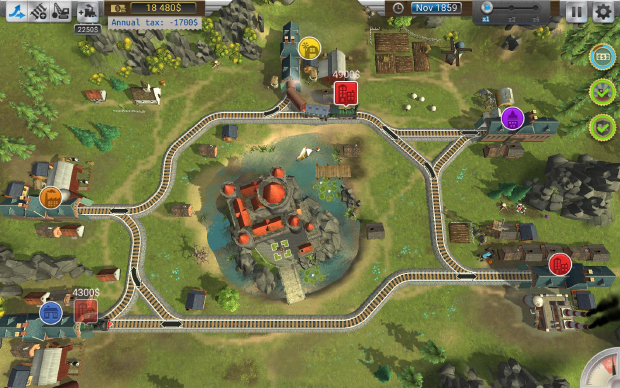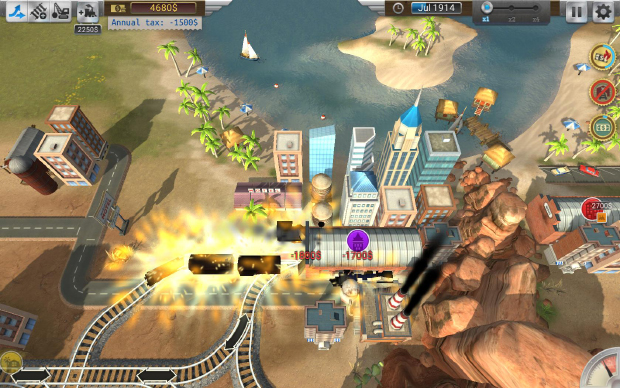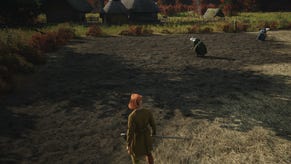Premature Evaluation: Train Valley
Narrow guage
Each week Marsh Davies boards the Steam locomotive as it chugs its way through Early Access and comes back with any stories he can find and/or is cannibalised by rabid commuters while delayed in a siding. This week he’s played Train Valley, a chirpy but challenging rail construction sim.
My attempts to run a railway system make a good case for nationalisation: the absurd delays as I reverse trains back and forth over a switch in the track, somehow making the same signalling error each time; the piles of cargo that end up in the wrong town, or so late that its value has completely expired; the destruction to wildlife, farmland and neolithic monuments; the forced relocation of indigenous people. Oh, and the massive loss of life, too, I suppose. At the end of it all, I go bankrupt - and yet they keep giving me another chance.
Which is good, because it is hugely enjoyable. (Maybe that’s why First Great Western still exist - they just seem to having so much fun no one can bear to end their contract.) And not just enjoyable, but exciting, too. Even though the game lets you pause time at any moment - to flip signals, give trains instructions, or designate areas for track to be laid - the game quickly requires intense concentration as you micromanage your choo-choos, ensuring that the blue one stops just long enough for the red one to nip past, before you flip the signal and shunt it onto the track just in front of the yellow one, which leaves its tramshed just in time for the purple one to enter. Or, more likely in my case: everyone dies and I console myself by paying myself a gigantic bonus and hiking fare prices. Suck it up, peasants!
Oh okay, your own salary, fare prices and the self-evident evil of private rail monopolies aren’t actually factors in the game: all you really need to care about is getting trains to the station of the matching colour, preferably before their value ticks down, and not blowing so much of your budget laying track that you can’t afford the next tax bill. And, really, this is more than enough to contend with. Each level takes place over the course of years, during which time new stations, bridges and tunnels will sprout up on the map, and much of the trick to the game is about optimising your track layout early on to account for later additional complexity without extensive and expensive remodelling.
You do feel, occasionally, like you’re at the mercy of the map: it might take a couple of attempts before you aren’t caught unawares by later scripted developments. Woe betide you if you’ve put track down in an area where a city is destined to erupt - it gets instantly obliterated. And, on some maps, cities don’t necessarily appear in the same place each time, either. On the whole I feel like this is an acceptable element of fickle fortune. You already have to account for the fact that the game’s randomness will sometimes go against you: demand you send trains out of stations just as trains are pulling into them, delaying their departure and reducing your profit.
Most of the maps have fixed layouts, however, each providing its own particular challenge: a nasty bottleneck through which all your trains must pass; the need for multiple lines between distant destinations, to keep up the flow of traffic in both directions; a spaghetti of signals and crossroads; structures that are too expensive to bulldoze. Pulling up your own track gets you a measly $100 for recouped materials, but demolishing anything that isn’t yours comes with a hefty pricetag. Running a line through some serf’s pumpkin patch may set you back a couple of grand for each tile. Stonehenge will cost you quite a bit more.
Although all you really have to do is survive financially, there are bonus victory conditions for each level. Sometimes these are just common sense - don’t send trains to the wrong station, don’t turn your trains into a blazing heap of twisted metal and severed limbs - but others are more arbitrary, designed to put you into tension with the levels particular geographical constrictions - put down more or less than a given quantity of track, don’t spend more than a certain amount bulldozing teepees or forests.
I confess, I am attaining less and less of these as the game goes on. Particularly the blazing heap of twisted metal one. On a recent level, I had so poorly managed my signals that I ended up in total gridlock, and, while I untangled that mess, I opted to ignore Purple Town’s plaintive demands to send a train to Blue Town. I hadn’t yet even built any track to Purple Town - I figured they could wait. They could not. The driver got so impatient that he drove the train right out onto the desert sand, killing himself and everyone on board. I was a little nonplussed at the time, but, on reflection, I too have been stuck on trains where such a conclusion would have seemed a blessing.
As the game progresses, bankruptcy becomes ever more of a problem: train crashes dent profits, sure, and make you rebuild track, but even if you avoid them, the simple need to get enough rails down will take you close to the red line. In the late game you are poised to drop track the moment an arriving train’s profit ding-dings into your bank account. If it all becomes too much, there’s a slider switch on the main menu that flips the game into sandbox mode, where you have a limitless budget to construct the railway as best you can. The imagined socialist paradise come at last!
Yet, somehow that’s just not as much fun. Say this for capitalism: it makes for a good game, even if it’s only the winners, and not commuters, who appreciate that.
Train Valley is available from Steam for £7. I think it’s certainly worth it. I played version b1.3 on 24/06/2015. The build is robust - I have so far spotted only one minor bug - and it currently ships with 18 levels set across Europe, America and Russia, spanning the 19th and 20th century. If you’re as terrible a Fat Controller as I am, then you may be playing those levels quite a few times. It has a colourblind mode, too! A further ‘season’ of six levels is planned, set in Japan between 1900 and 2020.


